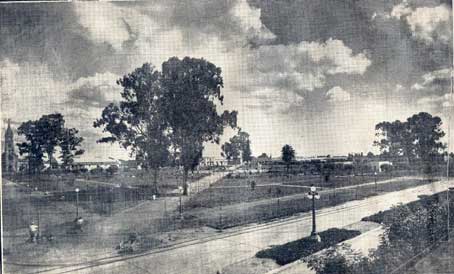
| In
the Name of Power Page 3 |
|||||||||||||||||||||||||||||||||||||
Foreign Street NamesIn 1881 Eduardo Casey started selling the lands of Venado Tuerto, being most of the rural buyers families from the British Isles. Among the buyers of urban lots ethnical diversity was higher. The census of 1887 showed an increasing urbanization. In four years, the urban population was 205 while the rural reached 1,411. The majority of these people were Argentine-born and came from the Santa Fe province. Among the foreign residents, the larger part were Irish and English. [5] |
|||||||||||||||||||||||||||||||||||||
In spite of the larger numbers of Argentines in the population, street names in the original urban planning were associated with the major foreign resident segments, who also concentrated the economic and political power. We found no documents recording the official street naming or their authors. The urban plans were submitted by Casey’s representative, Celestino Rosas. [6] Only five out of twenty streets in the original plan were given names of Irish origin: Casey, Brown, Turner, Gahan, and O’Farrell. [7] All these names belonged to the Irish community and were closely connected to Casey through business relations. Additionally, Turner and Gahan were linked with Casey by family ties. |
|
||||||||||||||||||||||||||||||||||||
A second group of streets received women names, such as María, Inés, or Catalina. Supposedly these names had religious of family grounds (Casey’s wife and mother were Mary, and Inés was his wife’s second name). The remainder of the streets had German or English origin: Warner in reference to the designer of the first urban plan, Rodolfo Warner; |
|||||||||||||||||||||||||||||||||||||
|
|||||||||||||||||||||||||||||||||||||
| Please contact us if you have a question or wish to suggest changes |
Copyright © The Irish Argentine Historical Society. 2004 |


